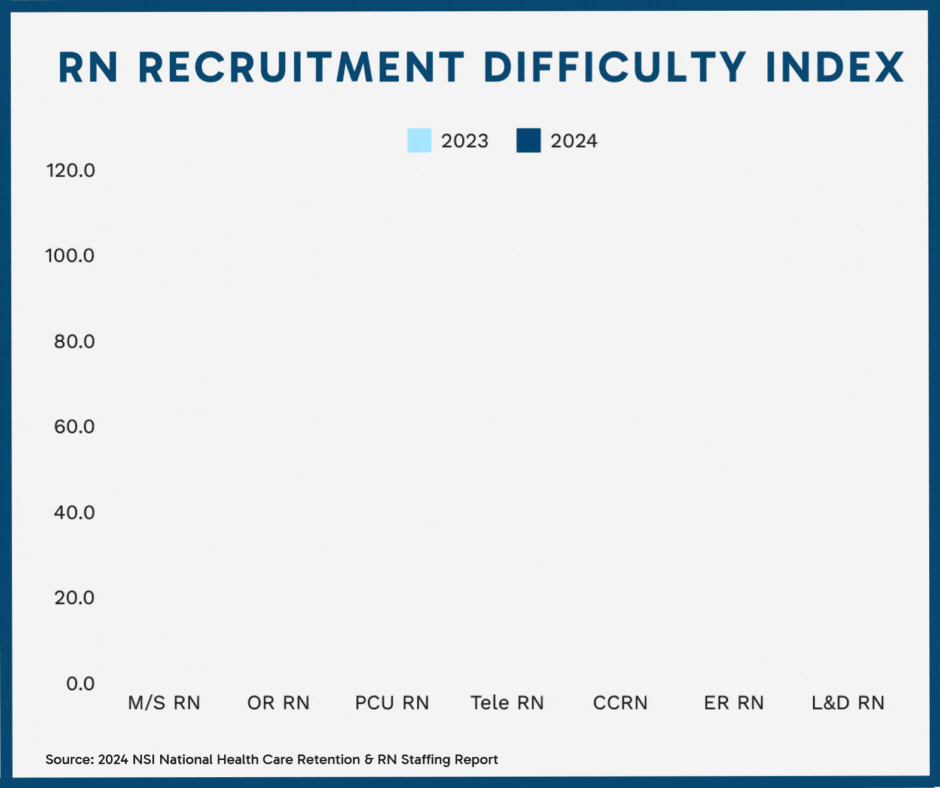RN Staffing & Turnover
RN turnover at the height of the COVID-19 pandemic reached 27.1% but has declined in the years since. In 2023, turnover dropped 4.1%, the survey found, with the national turnover rate at 18.4%.
Personal reasons, relocation, and career advancement were the top three reasons RNs resigned, according to survey respondents. Other reasons were scheduling, retirement, salary, education, commute, working conditions, and workload/staffing ratios.
“To better understand how hospitals met their short-term RN staffing needs, respondents were asked to identify strategies utilized,” the survey stated. “The top five most common strategies to staff the bedside include: asking RNs to volunteer for overtime, authorizing critical staffing pay, flexing part-time or per diem employees, relying on travel/agency nurses and utilizing the internal staffing pool.”
Volunteering for overtime could also contribute to burnout, initiating a trickle-down effect of nurses leaving their position — or the profession as a whole — according to the 2021 Nurse Burnout Survey conducted by Nursing CE Central.
RN Recruitment Difficulty
The NSI survey’s RN Recruitment Difficulty Index experienced a slight decrease overall, but the average recruitment time for an “experienced RN ranged from 59 to 109 days.”
The medical/surgical specialty has been the most difficult to hire for, followed by operating room, critical care, step-down, and telemetry nurses. However, recruitment time varied by geographical region.

In North Dakota, researchers investigated what influences graduating nursing students and practicing nurses to remain in the state and with their employer. The 2021 study in the “Journal of Nursing Regulation” found that “similar factors” influenced both nurses’ reason to remain with their employer or work in a rural or urban setting: competitive pay and benefits, positive work environment, career goals, and personal goals and reasons.
“The findings from the current study reflect the critical need for states and healthcare facilities to implement policy changes and measures that encourage recruitment, retention, work satisfaction, and intent to stay in their nursing workforce,” the authors stated. “Healthcare facilities rely on the supply of graduating nursing students and practicing nurses to fill position vacancies.”
A 2021 review in “Nurse Education in Practice” also stated that nursing student retention is “a costly concern” that affects supply and demand of nurses.
“Successful retention strategies require consideration of social and academic institutional systems with attention to student integration in a program,” the authors stated, finding that “whole-program retention strategies” were most effective.
The American Nurses Association offers a seven-step recruitment guide for organizations looking to establish a strategy:
- Connect with nursing schools and programs
- Craft a clear, detailed job description
- Showcase what makes your organization appealing
- Establish a structured interview procedure
- Stay current on technology
- Use social media to broaden your search
- Ask staff for insight










